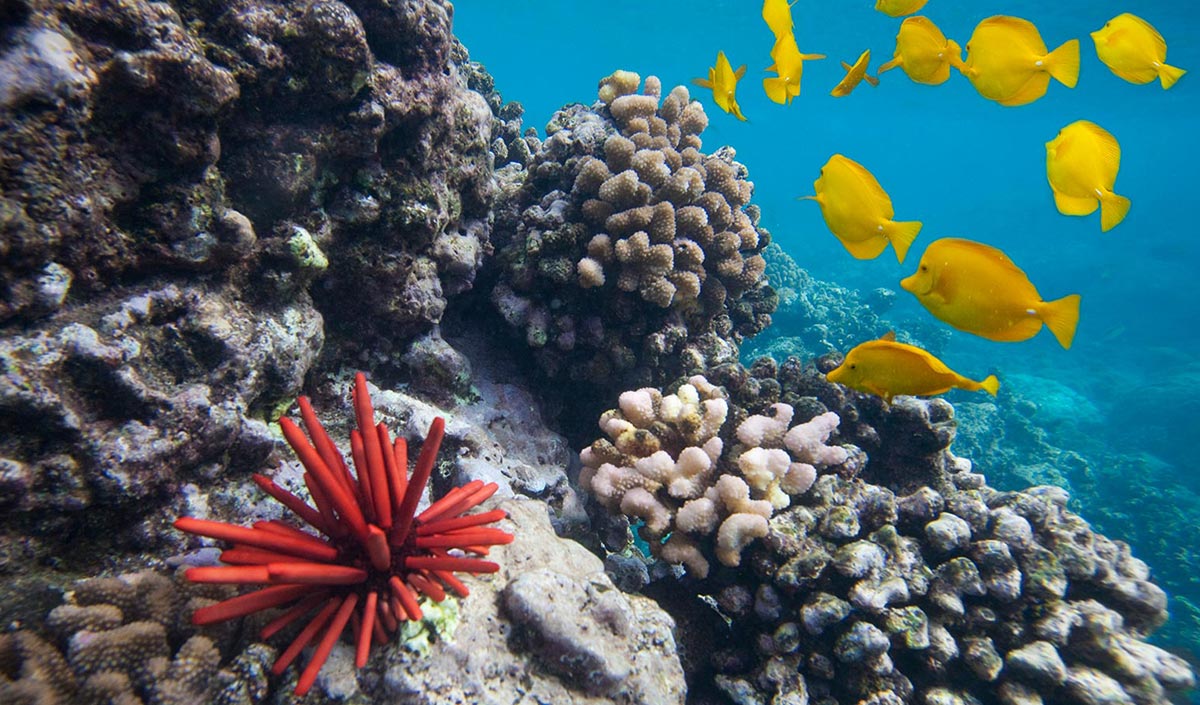Introduction
The U.S. Pacific Islands region (Figure 23.1) is vast, comprising more than 2,000 islands spanning millions of square miles of ocean. The largest group of islands in this region, the Hawaiian Archipelago, is located nearly 2,400 miles from any continental landmass, which makes it one of the most remote archipelagos on the globe.92 The Hawaiian Islands support fewer than 2 million people, yet provide vital strategic capabilities to U.S. defense – and the islands’ biodiversity is important to the world. Hawai‘i and the U.S. affiliated Pacific Islands are at risk from climate changes that will affect nearly every aspect of life. Rising air and ocean temperatures, shifting rainfall patterns, changing frequencies and intensities of storms and drought, decreasing baseflow in streams, rising sea levels, and changing ocean chemistry will affect ecosystems on land and in the oceans, as well as local communities, livelihoods, and cultures. Low islands are particularly at risk.
 ©Michael Wells/fstop/Corbis
©Michael Wells/fstop/Corbis
The Pacific Islands include volcanic islands, islands of continental crust, atolls (formed by coral reefs), limestone islands, and islands of mixed geologic origin, with tremendous landscape diversity. In the Hawaiian High Islands, as many as 10 ecozones – from alpine systems to tropical rainforests – exist within a 25 mile span.93,94Isolation and landscape diversity in Hawai‘i brings about some of the highest concentrations of native species, found nowhere else in the world.94 Several U.S. Pacific Islands are marine biodiversity hotspots, with the greatest diversity found in the Republic of Palau, and the highest percentage of native reef fishes in Hawai‘i.95,96 These islands provide insights into evolution and adaptation, concepts important for predicting the impacts of climate change on ecosystems. Their genetic diversity also holds the potential for developing natural products and processes for biomedical and industrial use.
The Pacific Islands region includes demographically, culturally, and economically varied communities of diverse indigenous Pacific Islanders, intermingled with immigrants from many countries. At least 20 languages are spoken in the region. Pacific Islanders recognize the value and relevance of their cultural heritage and systems of traditional knowledge; their laws emphasize the long-term multigenerational connection with their lands and resources.97,98,99 Tourism contributes prominently to the gross domestic product of most island jurisdictions, as does the large U.S. military presence. Geographic remoteness means that the costs of air transport and shipping profoundly influence island economies. Natural resources are limited, with many communities relying on agriculture and ecosystems (such as coral reefs, open oceans, streams, and forests) for sustenance and revenue.























